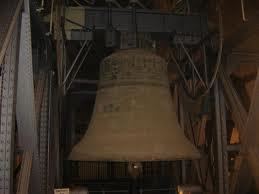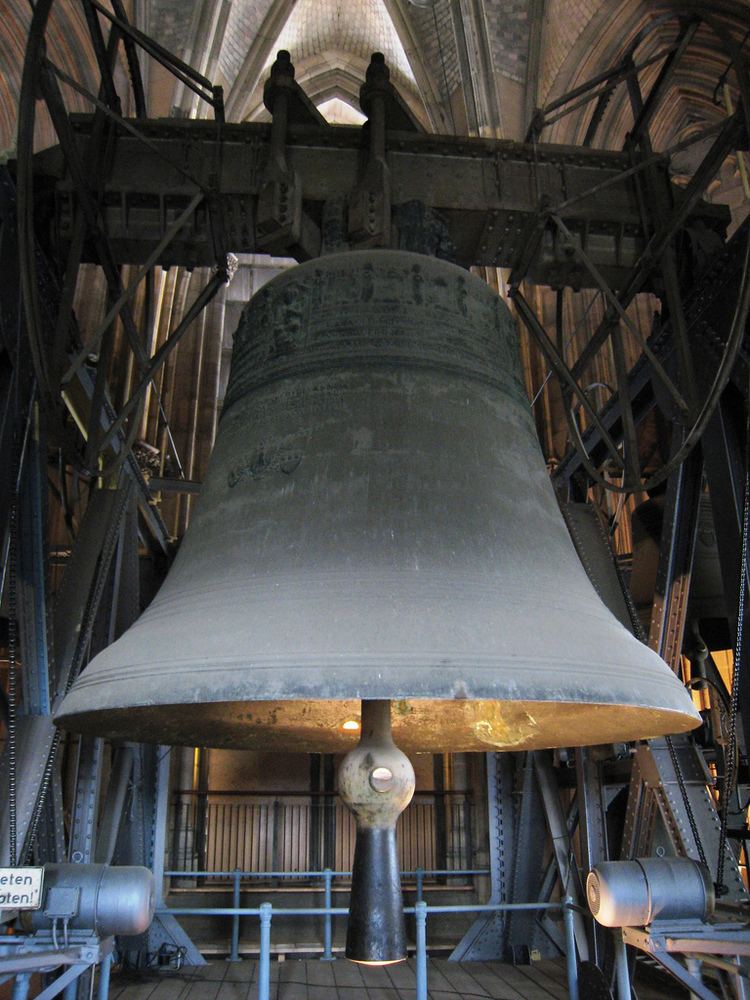 | ||
Similar Cologne Cathedral, Shrine of the Three Kings, Basilica of St Cunibert, Great Bell of Dhammazedi, Basilica of the Holy Apostles | ||
Saint Peter's bell (orig. German: St. Petersglocke, referred to in the Colognian language as Decke or Dekke Pitter and in common parlance as Dicker Pitter i.e. Fat or Big Peter) is the largest bell in Cologne Cathedral. It was cast in 1923 by Heinrich Ulrich in Apolda and hangs in the belfry of the south tower. With a weight of approximately 24,000 kg, a clapper weighing ~700 kg and a diameter of 322 cm, it is the largest (horizontally mounted) freely swinging ringable bell in the world.
Contents
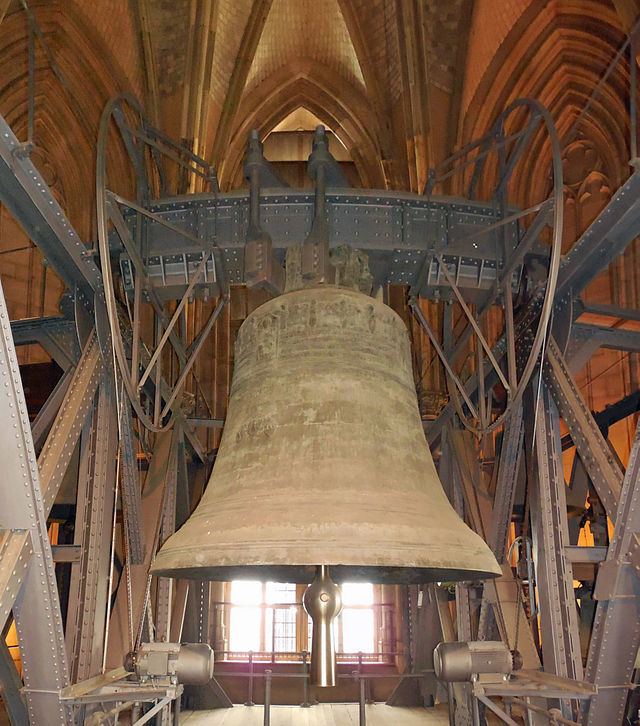
When the bell was cast in 1923, the bell-founder refused to take German marks as a payment because of the hyper-inflation. Instead the Cathedral Chapter paid 5000 US dollars. The predecessor of the bell was the "Emperor's Bell" (orig. German: Kaiserglocke) or Gloriosa ("Glorious") of 1873 which at 27,180 kg was even heavier than the St. Peter's bell. In 1918 it was melted down, because of the poor sound quality and the inadequate tone. Its metal was used for war purposes. During its thirty-year life it had regularly been put out of service to attempt to fix the inappropriate sound. Because of this the bell was nicknamed Große Schweigerin, or "big silence".
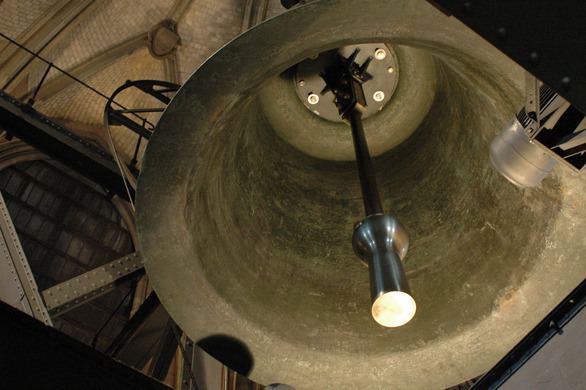
The crack
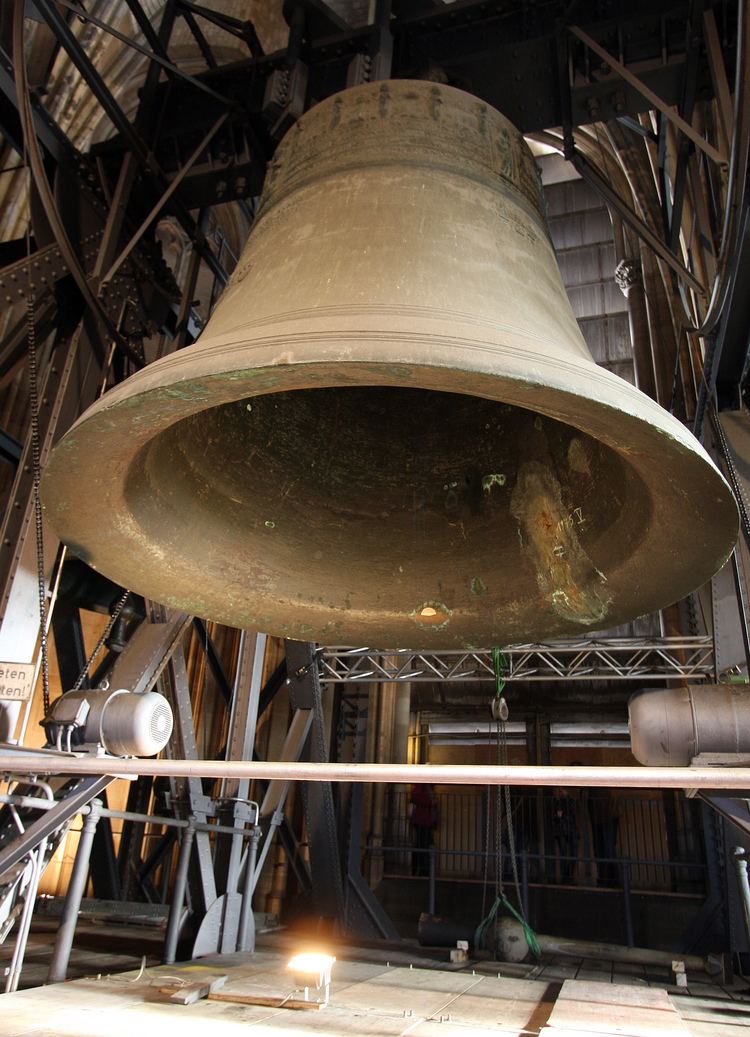
In 1951, a 110 cm long crack appeared on the bell. It was welded in 1956 by the company Lachenmeyer from Nördlingen. After repairs, the bell received a new, lighter clapper (approx. 600 kg), and it was rotated approximately 20 degrees so that the clapper did not strike the damaged area.
The broken clapper
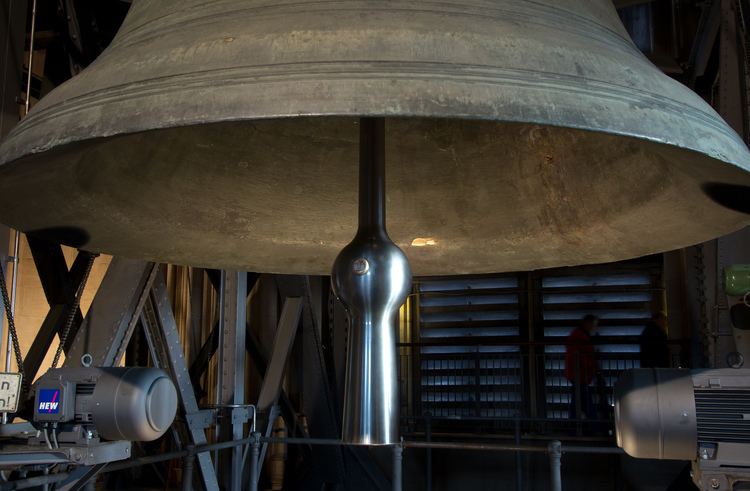
On January 6th, 2011, the approximately 800 kg clapper of the bell broke and dropped on the floor below. As it could not be repaired, a new one was cast and was installed in December of the same year. It was later discovered that the accident happened because the clapper had not been correctly installed in the 1950s, thus increasing wear, which consequently led to material degradation. The new clapper weighs approx. 600 kg and is 3.20 m long. It was installed on December 2nd, 2011, and was first rung on December 7th, 2011.
Ringing ordinance
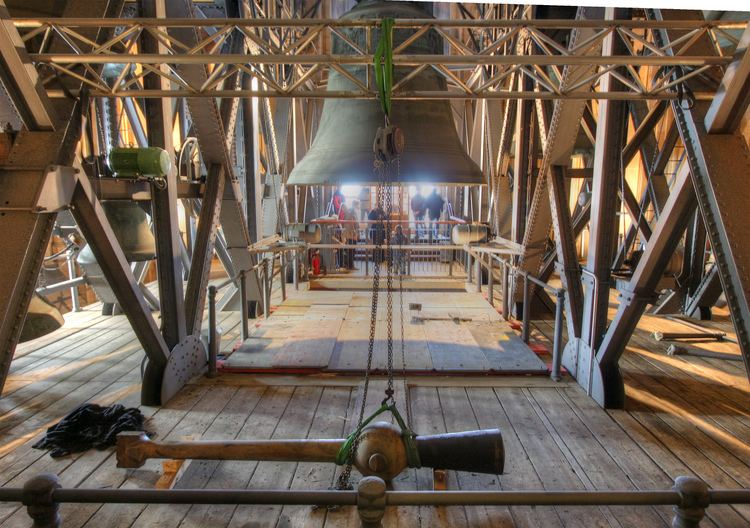
St. Petersglocke is only rung on special occasions and on solemnities (s. u.). The declaration or death of an Archbishop of Cologne or of a Pope, as well as the investiture of a new archbishop also warrant tolling St. Peter. All bells of the cathedral rang on the eve of 28th March, 1936, a Friedensappell ("peace appeal") of Hitler, which he made in Cologne due to the Reichstag elections. Likewise, the St. Petersglocke declared the end of World War II above the ruins of the city of Cologne in 1945, and in 1990 the reunification of Germany. As a rule, St. Petersglocke rings solo for ten minutes before all the others, which join in accordance with the general ringing ordinance. However, not all South Tower bells will be rung every time. For the Feast of the Immaculate Conception bells 1–6 are rung and for the Christmas Eve Vigil bells 1–3.
